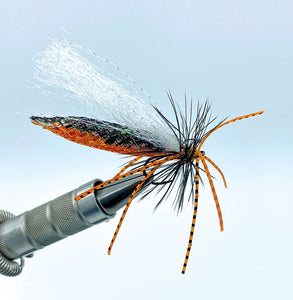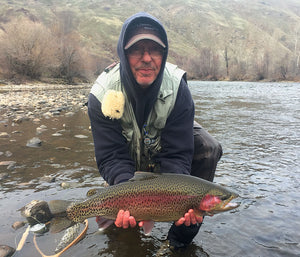-
Burned Wings - The Fly Tier's Benchside Reference - page 252
Method #6:
Burned Wings
Many tyers find cutting wings to be a somewhat tedious process and prefer instead to shape them by using one of the commer...
-
Wrapped Fur-strip Body - The Fly Tier's Benchside Reference - page 142
Wrapped Fur-strip Body
Cross-cut rabbit strips are used with this technique (as shown in the main sequence below) to produce streamer patterns such...
-
Wing Feathers - The Fly Tier's Benchside Reference - page 09
Wing Feathers
Like a human arm, a bird wing consists of three jointed sections, which correspond in human anatomy to the upper arm, the forearm,...
-
Gills - The Fly Tier's Benchside Reference - page 92
Gills
Gills, particularly on nymph patterns, are not an anatomical feature that most American tyers typically seek to imitate in much detail. There...
-
Slip-on Bead Head - The Fly Tier's Benchside Reference - page 429
A large number of tyers prefer this approach; it is quite simple and forms a symmetrical dressing since the hook shank runs through the center of t...
-
Side-mounted Legs - The Fly Tier's Benchside Reference - page 410
Affixing materials to the sides of the hook shank or fly body is one of the most common techniques for forming legs and is used on a variety of pat...
-
Lashed Fur-strip Body - The Fly Tier's Benchside Reference - page 143
Though restricted primarily to leech imitations, this fur-strip technique nonetheless produces a highly effective body. This body style, in whic...
-
Pulled Tinsel Body - The Fly Tier's Benchside Reference - page 173
Pulled Tinsel Body
This technique has appeared in the work of Dick Talleur, who credits Matt Vinciguerra, a fly tying photographer, with the invent...
-
Upright Quill Wings - The Fly Tier's Benchside Reference - page 244
As explained in the preceding section, the tyer has options at various stages of dressing upright quill wings. The sequence that follows is primar...
-
SS (Short Shank) Salmon Fly - by Greg Weisgerber
As a Fly designer, I strive to create new flies or improve on existing patterns to solve a problem, not just to make something new for the sake of ...
-
Dry Fly Innovations - by Craig Schuhmann
“Those of us who will not in any circumstances cast except over rising fish are sometimes called ultra-purists and those who occasionally will try ...
-
Exploring Synthetic Paper - Garren Wood
One of the joys of fly tying is finding new materials to create unique flies. A new material might give that older pattern a unique look that will ...
Use left/right arrows to navigate the slideshow or swipe left/right if using a mobile device
























